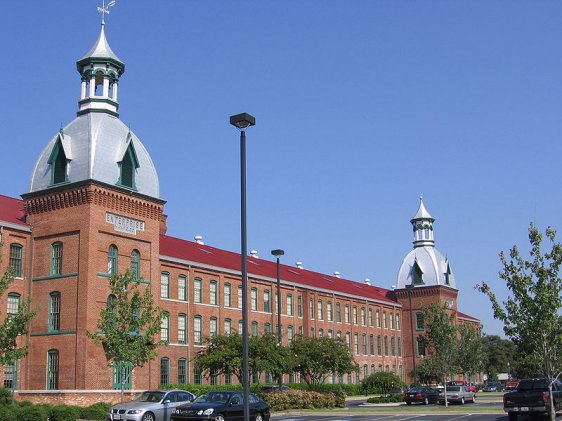 Sacred Heart Cultural Center, Augusta, Georgia
Sacred Heart Cultural Center, Augusta, GeorgiaSource: https://commons.wikimedia.org/wiki/File:Sacred_Heart_from_Calhoun_Expressway.jpg
Author: Sir Mildred Pierce

Augusta-Richmond County, or simply Augusta for short, is a city created by the merger of Augusta and Richmond Counties. The merger took effect in 1996. The consolidated city, which is located along the Savannah River, is often just known as Augusta. It has a population of around 196,000 (2011 estimate). It covers 306.5 sq mi (793 sq km), and is on an average elevation of 136 ft (45 m). The city is in the Eastern Standard Time Zone (UTC-5) and in summer the Eastern Daylight Time (UTC-4).
 Downtown Augusta, Georgia
Downtown Augusta, GeorgiaSource: https://commons.wikimedia.org/wiki/File:Augusta_Georgia_Broad_Street_Lamar_Building.jpg
Author: Sir Mildred Pierce

The area of present-day Augusta was inhabited by Native American tribes until the arrival of British troops up the Savannah River in 1735. The settlement of Augusta was named after Princess Augusta of Saxe-Gotha, the mother of King George III. It became the second capital of Georgia from 1785 until 1795, alternating with Savannah.
Augusta experiences a humid subtropical climate with mild winters and humid summers. The warmest month is July, with average temperature of 92°F (33.3°C). Coldest month is January, when the average temperature drops to 33°F (0.6°C). March receives the highest precipitation, at 4.61 in (117.1 mm).
Augusta is today a center for medicine, biotechnology and military. Located here is Georgia Health Sciences University, the only public health sciences graduate university in the state.
 Enterprise Mill, Augusta, Georgia
Enterprise Mill, Augusta, GeorgiaSource: https://commons.wikimedia.org/wiki/File:Enterprise_Mill_Augusta_Georgia.jpg
Author: Stacie Wells

Visiting Augusta-Richmond County
Augusta is located on Interstate 20, which connects it with Atlanta to the west and Columbia to the east. You can fly there on Delta Connections to the Augusta Regional Airport (AGS).Places of Interest in Augusta-Richmond County
- Augusta Canal
This is a recreational area where you can go hiking, biking and canoeing. - Boyhood home of President Woodrow Wilson
The house where President Woodrow Wilson lived with his family during the Civil War. The rooms have been preserved with period furnishings. - Fort Discovery/National Science Center
A center for interactive education.
 Latest updates on Penang Travel Tips
Latest updates on Penang Travel Tips

Copyright © 2003-2025 Timothy Tye. All Rights Reserved.

 Go Back
Go Back